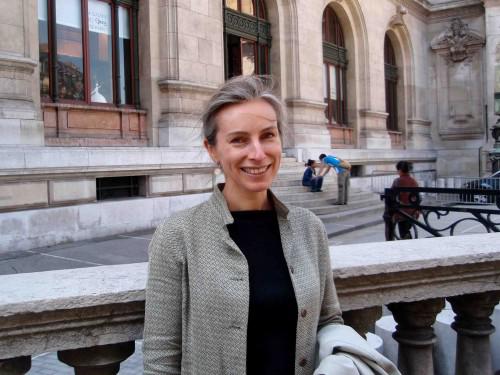



While investigating the deportation of dancers, Dr. Laure Guilbert, Fellow at Yad Vashem's International Institute for Holocaust Research in the summer of 2022, became aware of aspects of the Holocaust unexplored in the history of ghettos and concentration camps: the role of dance in the genocidal strategies of the Nazi perpetrators, as well as in the deportees’ struggle for survival.
A cultural historian, Dr. Guilbert was chief editor of the dance books (program brochures) at the Paris Opera for 15 years, while teaching the performing arts at university level. Her research field concerns dance and politics in the interwar and war periods. She works mostly on subjects long consigned to the margins of European history: the collaboration of German avant-garde dancers with the racial politics and mass performance of the Third Reich (the subject of her first book); the transnational exile trajectories of the Jewish and antifascist dancers from Central Europe; and the role played by dance in camp society during the Holocaust. This latter, and most current, research project, devoted to the practices and uses of dance in the ghettos and camps of the Nazi dictatorship, grew out of her work on exile.
"Although current studies on Holocaust music, literature, theater and visual arts represent an advanced research field, dance is not yet part of them," Dr. Gilbert explains. "This void deserves to be filled, as bodily movement can provide new elements for deciphering contexts of extreme violence."
"As in the other art forms, dance practices in camp society were not only witnesses, products and expressions of the Holocaust, but also responses and resistance to it."
"The fellowship at Yad Vashem gave me the opportunity to complete my body of archives," she continues. "I explored various sources dating from the prewar, war and postwar periods: oral and written narratives, family collections, administrative files, musical and visual collections, artworks, and post-Holocaust dance legacies.
"I am impressed first and foremost by the agency and creativity deployed by the deportees to cope with processes of dehumanization. They relied not only on their cultural resources and social networks, but also on the 'body technics' (the ways in which people in different societies, learn how to use their bodies) and creative abilities they had gained in their former lives. Even if only for short moments, they were able to reconnect with 'mindful bodies' and creative spirit, improvising dances, expressive movements or recreative games, helping each other with gestures of support and care. As such, these experiences belong to a history of survival and resistance considered in its daily and spiritual gestures. In the aftermath of the Holocaust, some survivors found ways to transform these experiences into the driving force of life commitments in arts, therapies and conflict-resolution issues."
On the other side, Dr. Guilbert also sadly observed how deeply the systemic hatred of the other was embodied in the most fleeting gestures of persecution and annihilation. "Forced dance scenes were part of some Nazi killing arsenals," Dr. Guilbert recounts. "The triggers of these 'theaters of the extreme' must be examined in relation to the education of the SS elites, as well as to the roots of antisemitism and colonial thinking."
In sum, by placing the dancing body in the center of historical reflection, Dr. Guilbert is endeavoring to deepen and enrich some perspectives on violence, resistance and resilience in the mid-twentieth century. To this end, she draws on current historiography that proposes an “integrated” approach to victims and perpetrators in order to get closer to the complexity of camp society.
"Hopefully my research will enrich comparisons within the field of Holocaust arts, as well as in relation to other genocides, such as in Cambodia, which had an important dance culture. In the long run, I wish to contribute to the development of a transnational history of 'displaced bodies' and of 'dance under duress.'"
"I believe that a more detailed knowledge of the role played by dance and gesture cultures in their relation to ideologies and political powers can further enrich our understanding of the contemporary era."










